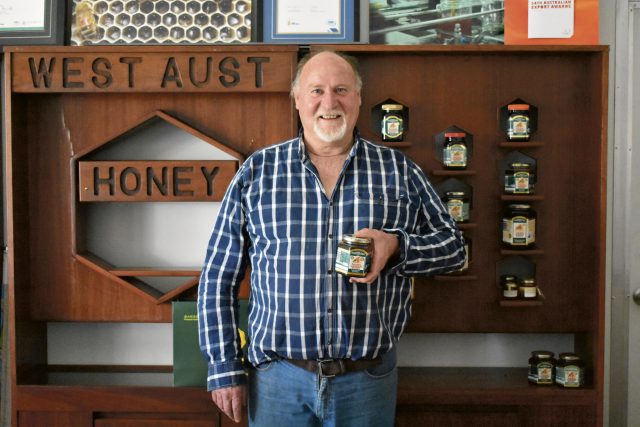The award-winning Fewster’s Farm in Muchea, now in the hands of fourth-generation bee keeper Kim Fewster, is wowing the world with their unique Jarrah honey. They are now the biggest independent producer of this rare honey, high in beneficial microbial activity.
Honey is gaining traction as a superfood, but not all honey is created equal. Chemicals used in disease and pest control, as well as heat treatment render some honey no more beneficial than pure sugar. This is not the case at Fewster’s Farm – they are certified organic producers and the medicinal properties of their product are tested in New Zealand laboratories that also test the famed Manuka honey.
“Organic certification means the bee sites, where the honey is collected from, must be at least 5-kilometres from any agricultural or industrial land,” says Kim. Thanks to rigorous quarantine legislation regarding apiary products that has kept Western Australia free of pests, Fewster’s Farm can apply the organic principle not just at their bee sites, but at all stages of production.
“All of our management is organic. Western Australia is the only place in the world that doesn’t need chemicals in the management of their bees, because we don’t have the disease or pests they have in other parts of the world,” Kim explains.
It’s not just the chemical-free status of the honey that attracts both local and international buyers. Jarrah honey has the ability to heal wounds, burns and even fungal infections – although you might want to buy a separate jar to the one you use on your morning toast! Batches of Fewster’s Farm honey are tested for microbial activity and then rated accordingly. In Australia producers are prevented from making health claims on their food labels, so while you are unable to deduce exactly what rating the jar you are purchasing has, if it’s Jarrah honey you are on to a good thing, says Kim.
“Jarrah honey we would normally say has a rating of plus-20 – which means it is twenty-percent as efficient in killing bacteria as pure phenol,” he says. Phenol is a potent disinfectant, but one that can have some unwanted side effects and certainly not as pleasant to apply as honey.
Jarrah honey also contains antioxidants, which are great immune boosters, and Kim is looking to have the exact content of these measured in his honey, as well as the glycaemic index. “Jarrah honey is quite low in glucose compared to other sweeteners,” says Kim.
Despite having been involved in beekeeping for more than fifty years, Kim’s passion is unwavering.
“Fewster’s Farm Honey has been gathered from the ancient forests and bushland of south Western Australia for over 100 years. Our honey is still produced as it was 100 years ago, with passion and pride. Our customers comment that our honey tastes exactly same as when they were children,” he says.
It’s no wonder this pure, medicinal and delicious product is in high demand overseas and saw Fewster’s Farm awarded the 2018 Industry and Export Small Business Award. With well-established markets in Asia (Kim is the Australian representative of the Asian Apiculture Association), they are now making headway into the European market to expand on the 14 countries that they currently export to. And we are fortunate enough to have them right on our doorstep.








